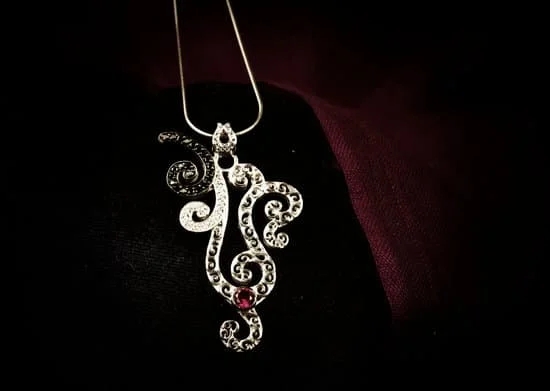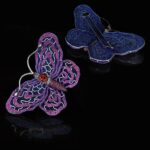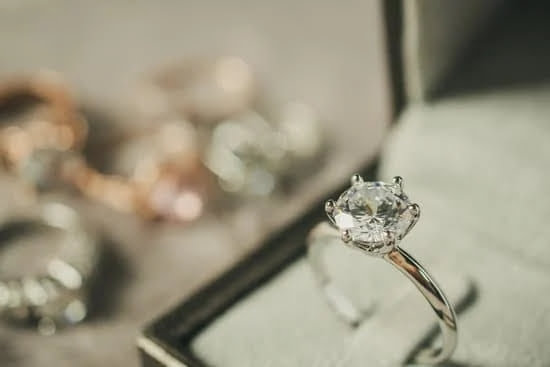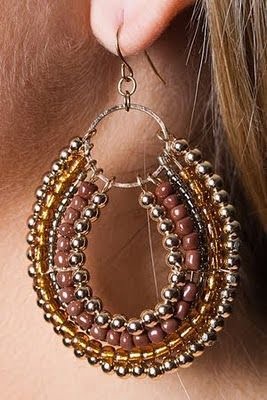Are you interested in learning how to design fine jewelry? Whether it’s a hobby or a potential career path, the art of creating exquisite jewelry pieces is a fascinating endeavor. Fine jewelry holds a special allure and significance, being cherished as both personal adornment and valuable investments. In this article, we will explore the process of designing fine jewelry, from understanding the basics to mastering the art of craftsmanship.
Creating fine jewelry involves more than just putting together precious metals and gemstones. It requires an understanding of the intricacies of design, craftsmanship, and personalization. The process begins with exploring different sources of inspiration, understanding the materials and tools needed for jewelry design, and conceptualizing intricate designs that translate into stunning pieces. Each step in the process plays a crucial role in bringing to life unique and extraordinary jewelry pieces.
Throughout this article, we will delve into various aspects of designing fine jewelry, including drawing inspiration from the world around us, educating on different types of gemstones and their significance in design, mastering the necessary techniques for craftsmanship, adding personal touches through customization, and even marketing and selling your own designs. Whether you’re an aspiring jewelry designer or simply intrigued by the artistry behind fine jewelry, there’s much to uncover in this captivating world.
So let’s embark on this journey into the world of designing fine jewelry.
Understanding the Basics
Materials
The most common materials used in fine jewelry design include precious metals such as gold, silver, and platinum. These metals are not only durable but also add value to the jewelry piece. Additionally, gemstones such as diamonds, rubies, sapphires, and emeralds are often incorporated into fine jewelry to add color and elegance. It’s important to source high-quality materials to ensure that the finished product meets both your standards and those of your customers.
Tools
As for tools, there are several essentials that every fine jewelry designer should have in their arsenal. This includes precision hand tools such as pliers, cutters, and files for shaping and manipulating metal. A jeweler’s saw is also necessary for cutting intricate designs into metal.
Moreover, a bench pin with a vise is essential for securing workpieces while sawing or filing. Other necessary tools include a flex shaft for drilling and polishing, a mandrel for shaping rings and bracelets, and a torch for soldering metal pieces together.
In addition to these basic tools, investing in specialized equipment such as a rolling mill for flattening metal sheets and a polishing machine for achieving a high-gloss finish can take your jewelry designs to the next level. Understanding how each tool works and practicing proper technique is crucial in mastering the craft of fine jewelry design.
Drawing Inspiration
Jewelry design is an art that requires creativity, knowledge, and skill. One of the crucial steps in this process is finding inspiration for your designs. Drawing inspiration from various sources can help you create unique and captivating jewelry pieces. So, how to design fine jewelry by drawing inspiration from different sources?
One way to find inspiration for jewelry design is by exploring nature. The organic shapes, colors, and textures found in flowers, leaves, and other natural elements can serve as a rich source of ideas for your designs. For example, the intricate patterns of a seashell or the vibrant hues of a sunset could inspire a new collection of earrings or necklaces.
Another potential source of inspiration is cultural heritage. Many jewelry designs are influenced by traditional symbols, motifs, and techniques from different cultures around the world. Exploring these cultural elements can provide you with fresh ideas and perspectives that could add depth and meaning to your jewelry pieces.
Furthermore, contemporary art and fashion trends can also serve as a valuable source of inspiration for jewelry design. Keeping up with current styles and artistic movements can help you create modern and relevant designs that resonate with today’s consumers.
| Sources of Inspiration | Examples |
|---|---|
| Nature | Seashells, sunsets |
| Cultural heritage | Traditional symbols, motifs |
| Contemporary art and fashion trends | Modern styles, artistic movements |
Sketching and Conceptualization
Drawing From Inspiration
Before putting pencil to paper, designers must draw inspiration from various sources such as nature, architecture, art, culture, and even personal experiences. This step involves carefully observing the elements that inspire them and understanding how to interpret these influences into a unique jewelry design.
The Art of Sketching
Once the inspiration is gathered, designers begin sketching their ideas on paper. It is important to create detailed sketches that capture every aspect of the envisioned piece including the shape, size, structure, and any intricate details. Sketching allows designers to visualize their concept and make necessary adjustments before moving on to the next stage.
Conceptualization and Prototyping
After sketching comes the process of conceptualization where designers work on turning their sketches into three-dimensional prototypes using various materials such as wax or metal. This stage allows for further refinement of the design and gives a real-life perspective on how the finished piece will look. It also helps in identifying any practical challenges that may arise during actual production.
By understanding how to design fine jewelry through sketching and conceptualization, aspiring jewelry designers can bring their creative vision to life by carefully cultivating their ideas from inception to realization. Taking into consideration all aspects of this process ensures that each piece created is not only visually appealing but also structurally sound and functional.
Choosing the Right Gemstones
Gemstones play a crucial role in fine jewelry design, adding that extra touch of elegance and sophistication. When it comes to designing fine jewelry, it’s essential to have a good understanding of the different types of gemstones available and their significance in jewelry design. Whether you’re looking to create a timeless diamond ring or a vibrant emerald necklace, each gemstone has its own unique qualities that can enhance the beauty of your jewelry piece.
One important factor to consider when choosing gemstones for your designs is their durability. Certain gemstones like diamonds, rubies, and sapphires are known for their hardness and ability to withstand everyday wear and tear.
On the other hand, softer gems like opals and pearls require more delicate handling and care. Understanding the durability of gemstones will not only ensure that your jewelry pieces last longer but also help you educate your customers on how to properly care for their precious jewels.
In addition to durability, it’s also important to consider the color, cut, clarity, and carat weight of gemstones when designing fine jewelry. Each of these factors contributes to the overall allure and value of the gemstone.
For example, a deep blue sapphire with excellent clarity and cut can make a striking centerpiece for an engagement ring, while a pair of vivid green emeralds can add a pop of color to a pair of earrings. By learning about these characteristics and how they impact the visual appeal of gemstones, you can make informed decisions when selecting stones for your designs.
| Gemstone Type | Significance |
|---|---|
| Diamonds | Symbolize love, purity, and strength |
| Rubies | Represent passion and vitality |
| Sapphires | Symbolize wisdom, loyalty, and nobility |
Mastering the Art of Craftsmanship
Mastering the art of crafting fine jewelry requires a wide range of techniques and skills to create exquisite pieces that stand out in the crowded market. Fine jewelry is known for its attention to detail and superior craftsmanship, making it essential for designers to hone their skills in various areas. Below are some techniques and skills necessary for creating stunning fine jewelry:
- Wire Wrapping: This technique involves bending and wrapping metal wire to create intricate designs and settings for gemstones. It requires precision and patience to achieve seamless and secure connections.
- Metalworking: Whether it’s soldering, forging, or casting, mastering metalworking techniques is crucial for creating the structural elements of fine jewelry. Understanding how different metals behave and being able to manipulate them is essential for producing high-quality pieces.
- Stone Setting: The way gemstones are set can greatly impact the overall design of a piece. Learning how to set stones securely while showcasing their beauty requires skill and practice.
In addition to these specific techniques, having a deep understanding of materials such as gold, silver, platinum, and various gemstones is crucial for fine jewelry design. It’s also important to develop patience and attention to detail, as working on small-scale pieces often requires precision that can be time-consuming but ultimately rewarding.
Lastly, having a keen eye for design and the ability to think critically about how different elements come together is essential for creating cohesive and visually appealing jewelry pieces. By combining technical skills with artistic vision, designers can produce truly exceptional fine jewelry pieces that captivate customers seeking unique and expertly crafted adornments.
Adding Personal Touches
When it comes to designing fine jewelry, adding personal touches through customization and personalization can take your pieces to the next level. Here are some ways you can add a unique touch to your designs:
- Engravings: Adding initials, meaningful dates, or special messages through engravings can make a piece of jewelry even more special for the wearer.
- Birthstones: Incorporating birthstones into your jewelry designs is a great way to personalize them for the wearer. Each birthstone holds significance and adds a personal touch to the piece.
- Customized Designs: Offering customized designs based on the client’s preferences and personality can make your jewelry stand out. Whether it’s creating a custom engagement ring or a personalized charm bracelet, catering to individual tastes can set your pieces apart.
In addition to these customization options, it’s important to consider the materials and elements used in your designs. From choosing metal finishes and chain lengths to selecting specific gemstones, every detail contributes to the overall personalized feel of the jewelry. By understanding what resonates with your clients and paying attention to their individual style, you can create bespoke pieces that hold sentimental value.
Ultimately, customization and personalization play an integral role in creating fine jewelry that not only looks beautiful but also holds personal significance for the wearer. With thoughtful details and personalized elements, you can design jewelry that tells a unique story and resonates with its owner on a deeper level. This approach sets your designs apart in a crowded market, making them truly distinctive as they reflect individuality and meaning.
Marketing and Selling Fine Jewelry
Once you have designed your fine jewelry pieces, the next step is to effectively market and sell them. It’s crucial to create a strong brand identity for your jewelry, whether you are selling online or in physical stores.
One effective way to promote your designs is by building an engaging online presence through social media platforms and your own website. Utilize high-quality images of your jewelry to showcase the unique aspects of your designs, as well as creating engaging content that tells the story behind each piece.
In addition to promoting your jewelry online, consider participating in local craft fairs, trade shows, or pop-up events to get exposure for your designs. These events allow you to interact with potential customers and receive valuable feedback on your designs. Networking with other designers and industry professionals can also open doors for collaborations and opportunities.
When it comes to selling fine jewelry, providing excellent customer service is key. Ensure that each piece is presented beautifully, and offer personalized assistance when customers are considering a purchase. Consider offering customization options for your jewelry designs to cater to individual preferences and tastes. Building strong relationships with customers will not only lead to repeat business but also positive word-of-mouth referrals.
By implementing these marketing and selling strategies, you can establish a successful platform for selling your own fine jewelry designs. It’s important to constantly refine and adapt your approach based on customer feedback and market trends in order to stay competitive in the industry. With dedication and a strong focus on promoting your brand, you can see success in turning your passion for designing fine jewelry into a flourishing business.
Conclusion
In conclusion, the art of designing fine jewelry is a meticulous and intricate process that requires skill, creativity, and a deep understanding of materials and techniques. From the initial stages of drawing inspiration to the final product, creating exquisite jewelry pieces is a labor of love. Understanding the basics, such as the materials and tools needed for jewelry design, is crucial in ensuring that the finished piece meets high standards of quality and craftsmanship.
Choosing the right gemstones also plays a significant role in jewelry design, as different gemstones hold various meanings and significance. Mastering the art of craftsmanship is essential for creating unique and stunning designs that stand out in the competitive world of fine jewelry. Additionally, adding personal touches through customization and personalization can make a piece even more special to its wearer.
For those looking to delve into the world of designing fine jewelry, it’s important to remember that marketing and selling your creations are just as crucial as the design process itself. Knowing how to promote and sell your own jewelry designs is essential for success in this industry. Overall, designing fine jewelry is an intricate blend of artistry, skill, and business acumen – but with passion and dedication, anyone can create stunning pieces that captivate hearts and minds.
A career or hobby in fine jewelry design offers endless possibilities for self-expression while bringing beauty into people’s lives through wearable art. Whether you’re an aspiring designer or simply interested in learning more about how to design fine jewelry, these key aspects will help guide you on your creative journey toward mastering this timeless craft.
Frequently Asked Questions
How Do You Become a Fine Jewelry Designer?
Becoming a fine jewelry designer typically involves formal education in jewelry design, such as a degree from a recognized art or design school. Additionally, gaining hands-on experience through apprenticeships or internships with established jewelry designers can provide valuable insights and skills necessary for the profession.
How Do You Learn to Make Fine Jewelry?
Learning to make fine jewelry often starts with mastering the fundamental techniques of metalworking, gemstone setting, and other specialized skills. Many aspiring jewelers choose to attend trade schools or specialized jewelry-making programs to learn these techniques and gain practical experience. Additionally, seeking out mentorship or working alongside experienced jewelers can offer valuable guidance and expertise in the craft.
How Do You Come Up With Jewelry Designs?
Coming up with jewelry designs often requires a combination of creativity, inspiration, and technical skill. Many designers find inspiration in a wide range of sources, including nature, art, architecture, and cultural influences.
Sketching and experimenting with different materials can also help fine jewelry designers develop their unique style and create innovative designs that resonate with their target audience. Collaborating with clients to understand their preferences and custom-designing pieces based on their specific tastes is another approach to generating new jewelry designs.

Welcome to my jewelry blog! My name is Sarah and I am the owner of this blog.
I love making jewelry and sharing my creations with others.
So whether you’re someone who loves wearing jewelry yourself or simply enjoys learning about it, be sure to check out my blog for insightful posts on everything related to this exciting topic!





